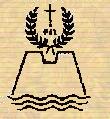|
CELIBACY IN THE HISTORY OF THE CHURCH
The
history of celibacy is the history of Christianity. In the
beginning, married men were allowed to be ordained priests due to
the circumstances of time and place, wherewith the first converts to
Christianity were probably married couples who, in their zeal,
attained holiness and, therefore, would really make good priests.
St. Peter was an example of this.
But
the unwed, whom St. Paul exhorted to remain single, who sought
ordination were required to remain celibates, as shown by the
example of St. John the Evangelist.
The
married who aspired to be ordained priests were exhorted to aim at
celibacy, after all, all married Christians were exhorted to do
this. Most of the debates on celibacy were focused on this: whether
the previously-married man who is ordained may keep his wife or not.
And both the Eastern and the Western practice was that they should
not keep their wives, i.e. they must separate. Though, in practice,
especially in remote areas, this was not observed. The debate was
never on whether the priest should be a celibate or not.
St.
Paul's exhortation, "Bishops and deacons must have one
wife." is restrictive, not injunctive, i.e. St. Paul was not
saying that Bishops should marry; but that if a bishop was already
married, he should have only one wife.
The
Teaching of the Church is clear. Everyone is called to be a virgin,
which included celibacy; and married laymen were encouraged to
separate from their wives and become celibates for the sake of of
God's kingdom. And we are talking of laymen, not priests.
The
practice of receiving previously married men into the priesthood was
stopped as early as the time of St. Epiphanius, wherein the Church
declared that no married man was to be admitted to the diaconate,
priesthood and Episcopate. Only married men who had been widowed or
had agreed with his spouse to separate were allowed for ordination.
And this is the practice of the Church until now.
St.
Clement spoke of married priests but, again, these were those who
were married before ordination. Paphnutius objected to celibacy as
being too rigorous but, again, only for those already married before
ordination. Written documents in England seem to show that most
priests were married; but the word used was 'clerics' and not
'priests'. Clerics, a word referring to minor orders, really can
marry. But in the 15th century, it was clear in England that wives
of priests were called concubines.
In
295 and 302, this traditional teaching of the Church took the form
of a conciliar decree in the Council of Elvira. It decreed that
those who were already bishops and priests were to remain celibates;
and the code of Justinian prohibited the consecration to the
Episcopacy of married priests.
In
692, the Council of Trullo imposed the traditional doctrine that
priests and bishops must observe celibacy; and those married before
ordination must eventually separate from their wives. Priests and
deacons in the East were allowed to live with their wives; but, in
the West, Sts. Augustine, Ambrose, Jerome and Hilary were of one
mind that priests must observe continence.
At
the Council of Tours in 567, priests married before ordination were
expressly forbidden to live with their wives. And by 747, Pope
Zachary included the subdiaconate to those who must observe
celibacy.
Observe
that celibacy was not a doctrine that developed in the Church
and formalized in the Middle Ages. It was a fully developed
doctrine from the beginning of the Church, observed by all
Christians and merely formalized for priests during the 7th
century.
(12-06-02) | 